The article below by Shireen T. Hunter entitled “Calling Iranians “Descendants of the Magi” is Actually a Compliment” originally appeared in the LobeLog on September 14, 2016.

Shireen T. Hunter is a Research Professor at Georgetown University’s School of Foreign Service. Her latest publication is God On Our Side: Religion, Foreign Policy and International Affairs (Rowman & Littlefield, December 2016).
Kindly note that excepting one picture, all of the accompanying images and their descriptions that appear in the below posting did not appear in the original posting in the LobeLog.
Readers may also be interested in the article “Pan-Arabism’s Legacy of Confrontation with Iran”; the article has undergone several revisions on Kavehfarrokh.com with the latest on July 4, 2016. An academic version of this article (in Persian) was first published in 2004:
- کاوه فرخ (۱۳۸۳/2004). میراث پان عربیسم. اطلاعات سیاسی-اقتصادی, شماره ۲۰۹-۲۱۰, صفحه ۴-۱۵ – Farrokh, K. (2004). The Legacy of pan-Arabism. Ettelaat Siyasi-Eqtesadi[Political-Economic Information], Number 209-210, pp.4-15.
More recently, a second and newer academic article on pan-Arabism by Kaveh Farrokh has also been published in the Palgrave-macmillan Encyclopedia of Imperialism and Anti-Imperialism in 2015:
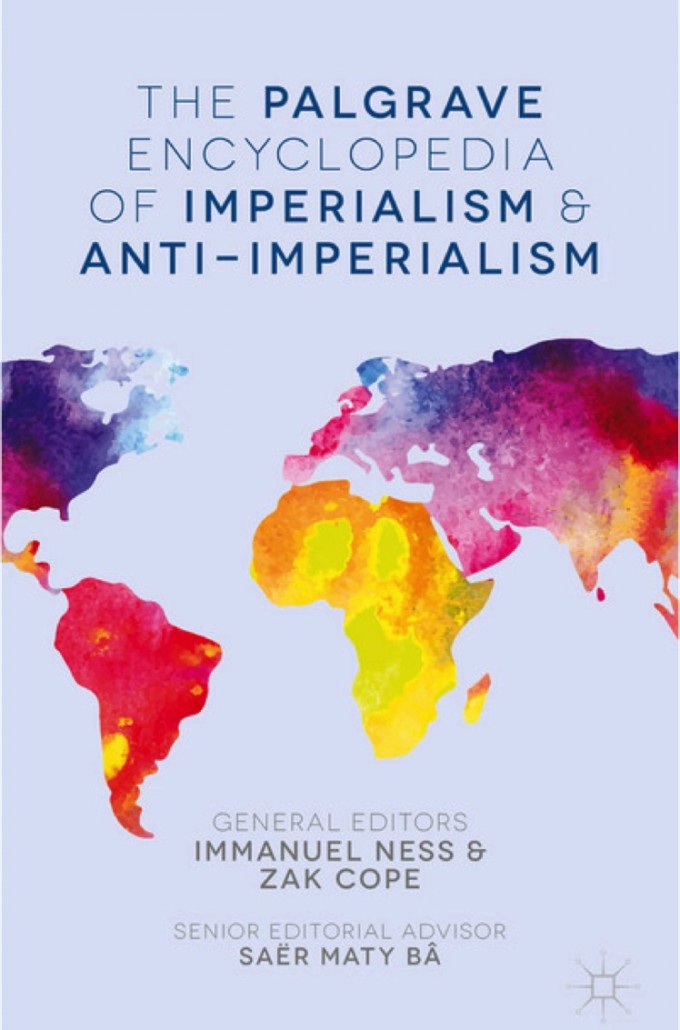
===================================================================
Recently, the chief mufti of Saudi Arabia, Abdul Aziz Al Sheikh, said that Iranians are Majus. This is the Arab name for Iran’s Zoroastrians, who were the majority of the people at the time of the Arab invasion of Persia in the 7th century AD. The mufti was implying by this statement that Iranians are not Muslims.
This belief is neither new nor limited to the Saudis or the Wahhabis. However, as far as I can recall, no significant Muslim religious leader had openly called them non-Muslims, although some secular leaders had done so before. For example, during the Iran-Iraq War, Saddam Hussein regularly referred to the Iranians as Majus, and even worse, as insects that should be sprayed with pesticides. Indeed, he did just that by using chemical weapons against them.

The late Saddam Hussein (1937-2006) in his office in the last days of the Iran-Iraq war. Saddam’s hatred of Iranians endured right up to his last moments – as he shouted “down with the Persians” during his execution on December 30, 2006 (see December 31, 2006 BBC Report “Saddam Hussein’s last moments” and New York Times report, December 31, 2006). For more see Pan-Arabism’s legacy of Confrontation with Iran …
This widely held Arab belief that Iranians are not real Muslims is based on the premise that they never fully converted to Islam. Instead, they developed Shi’ism, which is allegedly nothing more than their old religion with a thin guise of Islam. Moreover, Arabs believe that the Iranians did so in order to subvert and undermine their true and pure Islam. In a Cairo bookshop near Al-Azhar several years ago, I saw a book for sale entitled Shia Conspiracy Against Islam. Since then, Saudi Arabia, Qatar, and others, along with religious figures such as the Egypt-born resident of Qatar Sheik Yusuf Qaradawi, have sponsored many more books on Shi’ism’s threat to Islam and Iran’s plans to convert Sunnis to Shi’ism.

Sheik Yusuf Qaradawi
Some highly educated and otherwise reasonable and tolerant people also subscribe to this view. Once at a meeting in Cairo, long before the current upsurge in Sunni-Shia disputes, a very enlightened and tolerant Egyptian colleague, in response to a comment of mine about the dangers of sectarianism in the Muslim world, said: “Yes, you are right. We have a big problem and that is the conflict between the Muslims and the Shias.” He thus betrayed an ingrained attitude toward Shias.
The idea of Shi’ism as an Iranian creation has, of course, no historical validity. The split that occurred within the Muslim community of Arabia immediately after the Prophet Muhammad’s demise and that eventually led to the Sunni-Shi’a divide, was a purely Arab phenomenon. At the time, Arab/Islamic armies had not yet conquered Iran. Later, some Iranians might have seen in the Shi’a split from Sunnism a reflection of some of their ancient values and rites. But they certainly did not invent Shi’ism. The first impetus for the Iranian embrace of the House of Ali came after the Arab invasion and the policy of ethnic discrimination practiced by Iran’s new Arab rulers, beginning with the first Caliph Omar, despite Islam’s claim to the racial and ethnic equality of all Muslims. The Abbasids even perpetuated this practice, although Persian Muslims had contributed considerably to their victory over the Umayyad dynasty.

The late King Khalid ibn Abd al Aziz Al Saud of Saudi Arabia (1975-1982) who called on the late Saddam Hussein to “crush the stupid Persians”.
If Iranians are non-Muslims then Islam’s edict that Muslims should not fight other Muslims does not apply to them. Therefore, you can kill Shi’a Iranians just like any other infidel without any twinge of conscience. In the current atmosphere of tension between Saudi Arabia and Iran, spreading the view of Iranians as non-Muslims has considerable political ramifications. For example, it can help the Saudis enlist other Muslims in their fight, both overt and covert, against Iran. Already, groups such as the Taliban, the Islamic State, and al-Qaeda have internalized this Saudi view and view the Iranians as infidels.

The late Osama bin Laden (1957-2011) (left) and his supporters in Pakistan (right) who continue to regard him as a hero. Before his ouster from Afghanistan, Bin Laden had turned the country into his own anti-Persian mini-Caliphate. Among his draconian Persophobic laws were bans on the use of the Persian language, Persianate musical instruments and the Nowruz (Iranian New Year). His mentors in Pakistan and India have gone so far as to insist that the Iranian word for Goodbye or “Khoda-Hafez” now be re-defined as “Allah-Hafez”. Bin Laden’s’ followers in Pakistan often shout “Death to Iran” during their regular anti-Western rallies.
The Real Gift of the Magi
The Saudi mufti’s undignified outburst is understandable given these latent prejudices as well as Ayatollah Ali Khamenei’s criticism of Saudi handling of the Haj. More surprising is that Iranians are offended at being called “Majus.” Majus means disciples of the Magi (Mogh), which means Zoroastrian (or pre-Zoroastrian) priest. These same Magi, of whose wisdom Plato spoke highly, brought gifts to the Christ child.
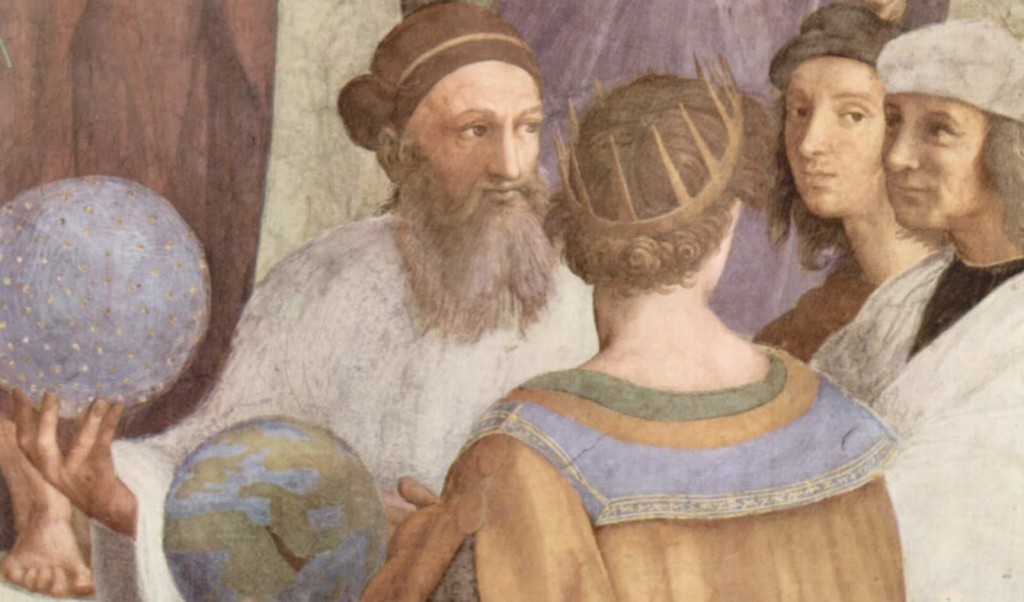
A detail of the painting “School of Athens” by Raphael 1509 CE (Source: Zoroastrian Astrology Blogspot). Raphael has provided his artistic impression of Zoroaster (with beard-holding a celestial sphere) conversing with Ptolemy (c. 90-168 CE) (with his back to viewer) and holding a sphere of the earth. Note that contrary to Samuel Huntington’s “Clash of Civilizations” paradigm, the “East” represented by Zoroaster, is in dialogue with the “West”, represented by Ptolemy. Prior to the rise of Eurocentricism in the 19th century (especially after the 1850s), ancient Persia was viewed positively by the Europeans. For more see Ken R. Vincent: Zoroaster-the First Universalist …
In fact, Zoroastrianism is the first of the world’s monotheistic religions, although it is often seen as dualistic because it recognizes the existence of an evil force (Ahriman) that fights the good God (Ahura Mazda). But, as in the Old Testament, the good God ultimately triumphs. Zoroastrianism has a sophisticated cosmology and is the foundation of many principles that are part of the Abrahamic religions, including the abstract concepts of heaven, hell, a bridge of judgment, a cosmic denouement at the end of the world, and the coming of a messiah, or Mahdi (Saoyeshant) in Zoroastrianism.
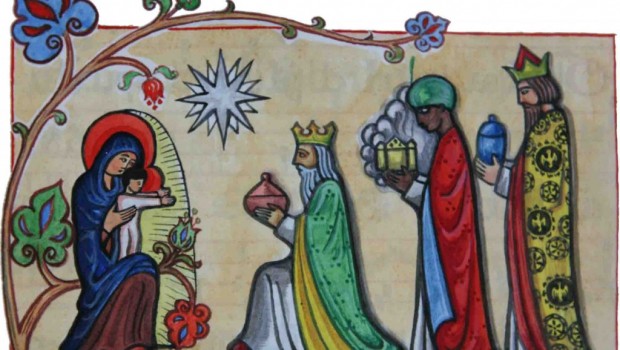
The three magi, from an illuminated manuscript in Farnborough Abbey (Source: Lobe Log).
In fact, Zoroastrianism offers the first dialectic rather than circular understanding of human history and destiny. The conflict between two opposing forces leads to a final denouement rather than perpetual reincarnations or the soul’s absorption into a vast center of energy. It’s ironic that Westerners, with their emphasis on the battle between good and evil on display during the 2003 US-led invasion of Iraq, do not recognize its source. Zoroastrianism recognizes free will and enjoins good thoughts, good works, and good words. It is a positive religion and emphasizes the role that the individual should play in the ultimate victory of good over evil. Also a happy religion, its festivals outnumber its mourning ceremonies.
Under the Sassanids, Zoroastrian Iran developed what the Danish historian, Arthur Christensen, has called “a magnificent edifice.” Although not on a par with Greece or Rome, it had its centers of learning, including the famed university of Jundi Shapur, today’s Ahwaz, where many Christian and Greek scientists came when Byzantium’s policies discouraged learning. The sixth-century Sassanid King Khosrow Anoushirvan had a reputation for modeling himself after Plato’s philosopher king, a reputation that enticed some Greek philosophers to go to his court. Although he did not live up to their expectations, they were surprised that he was familiar with Greek philosophy and the ideas of Plato and Aristotle. Sassanid Iran had a flourishing culture of art, painting, sculpture, and music. In short, the children of the Magi had not done so badly for themselves.
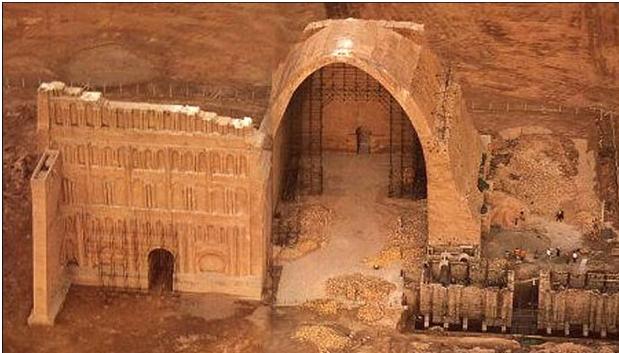
Remains of the Archway of Khosrow (of the ancient Sassanian capital of Ctesiphon– see also Sassanian Architecture-کاخهای ساسانیان– and Ctesiphon-تيسفون–), located just forty kilometers from Baghdad in Iraq. The term “Baghdad” is old Persian for “Bestowed by God” or “Godiva”.
By the time of the Arab invasion in 642, Iran’s Zoroastrianism had lost some of these positive aspects. It had become more fatalistic, partly because of the influence of Babylonian creeds, Hinduism, and Buddhism. Asceticism had replaced its more active spirit. Imperial overstretch had weakened the Sassanid Empire, thus making it easier for the Arabs to defeat it.
The Gift that Keeps on Giving
Despite their defeat, the Iranians largely formed and shaped what has come to be known as Islamic Civilization. For 300 years, Muslims used the Sassanian tax and other archives for their own administrative purposes. Sassanian administration, court etiquette, and governing methods became the model for the Islamic Caliphates and later Turkic rulers from the Seljuks to the Ottomans. Most post-Islamic books on politics, such as Siyastnameh of Khajeh Nezam ul Molk—the vezir of the Seljuk king, Malekshah—and later books were modeled after the book of Ardeshir Babekan, the founder of the Sassanid Empire, called Karnameh Ardeshir Babekan. Many Persians, such as the Barmaki family, actually ran the chancelleries of the Abbasid caliphs and later those of Turkic rulers.
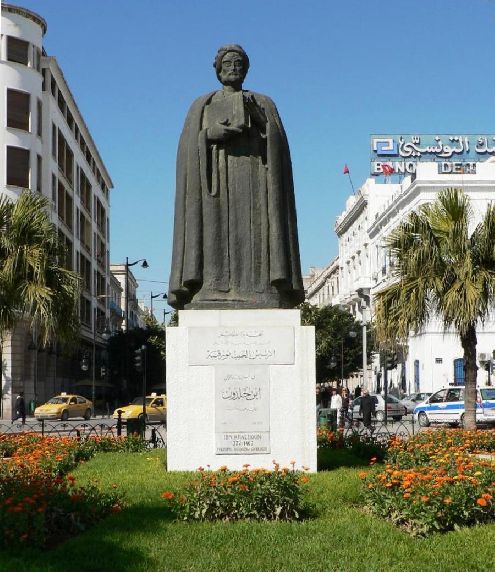
A statue of Arabo-Islamic historian, Ibn Khaldun (1332-1406) in Tunisia. Ibn Khaldun emphasized the crucial role of the Iranians in promoting learning, sciences, arts, architecture, and medicine in Islamic civilization. It was pan-Arabists such as Sami Shawkat who insisted that history books such as those by Ibn Khaldun be destroyed or re-written to remove all references of Iranian contributions to Islamic civilization. The former Baathist regime in Iraq promoted such policies and even worked alongside numerous lobbies to promote historical revisionism at the international level.
The Baghdad Dar Ul Hikma was modeled after the Sassanid Khaneh e Danesh (both mean houses of knowledge). Its art forms, which later were much diminished by Islamic restrictions on painting, sculpture, and music, shaped Islamic art from Mesopotamia to Andalusia to Mogul India. As noted by Professor Roman Girshman, the real inheritor of Sassanid art was Islam, which took that art with it everywhere it went. Professor Ada Bozeman has called this influence Iran’s conquest of Islam. Sibveyh, a Persian, wrote the first Arabic grammar, and the Iranians, together with Christians, translated Greek works into Arabic. Even the Persian One Thousand and One Nights (Hezar Afsaneh) became the Arabian Nights. In short, while not perfect, Iran’s pre-Islamic civilization could more than hold its own with other existing civilizations, including that of Byzantium.
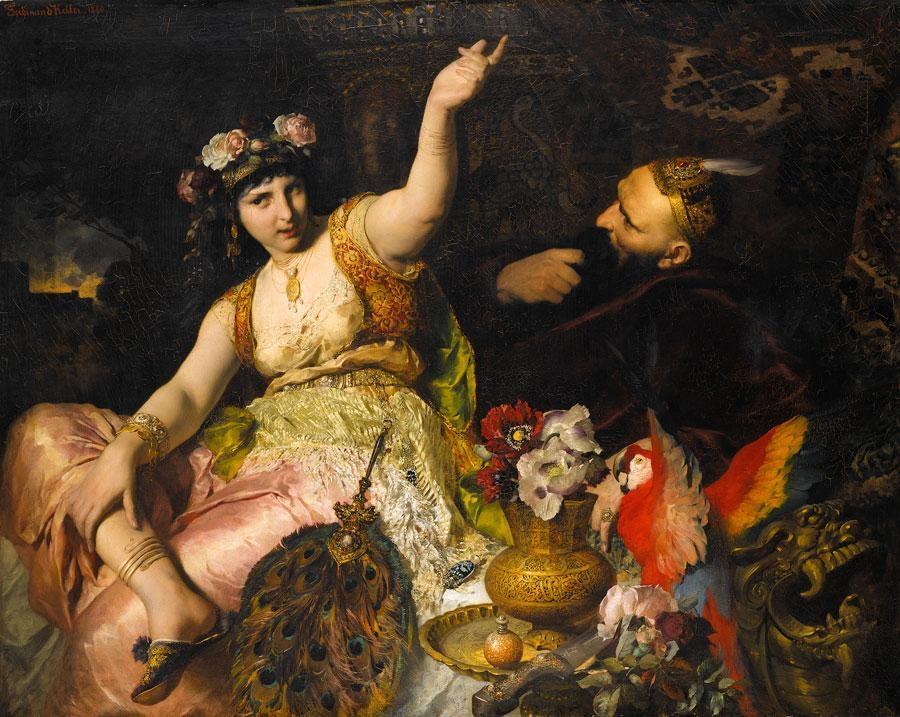
German painter Ferdinand Keller’s (1842-1922) 1880 painting of Sheherzade (Shahrzad) and Shahyar.
It’s not surprising for the Saudi mufti, out of political expediency, to call Iranians Majus. What is sad is that present-day Iranians should see this appellation as an insult. But then Iran’s Islamists have been waging a campaign against the country’s indigenous culture for at least 60 years. Since their victory in the 1979 revolution, they have worked relentlessly to erase all vestiges of Iran’s indigenous culture and to subsume it under a state-sponsored, politicized, and ideologized form of Islam that is totally alien to Iran’s traditional Shia Islam, which is closely intertwined with Iran’s early civilization.



